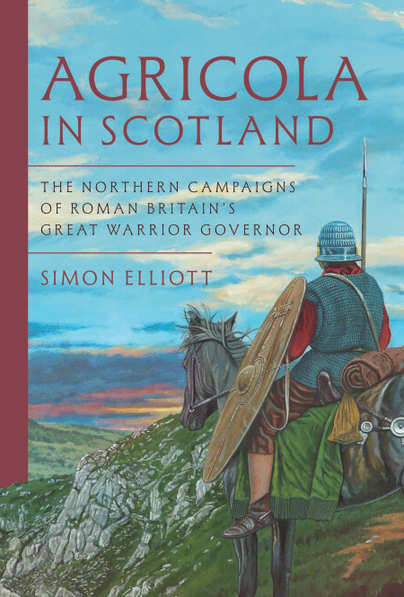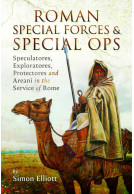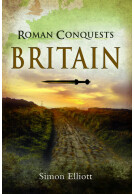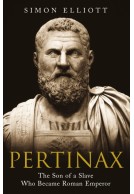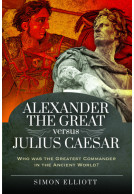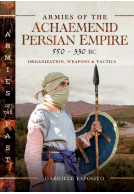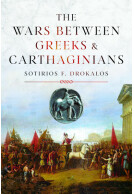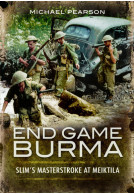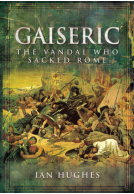Agricola in Scotland (Hardback)
The Northern Campaigns of Roman Britain’s Great Warrior Governor
Imprint: Pen & Sword Military
Pages: 224
Illustrations: 20 colour illustrations
ISBN: 9781399068284
Published: 3rd July 2025
(click here for international delivery rates)
Order within the next 42 minutes to get your order processed the next working day!
Need a currency converter? Check XE.com for live rates
Agricola was the great Flavian warrior governor of Britain tasked by the emperor Vespasian with conquering the far north of its main island for the first time. Initially campaigning in Wales and then the north of modern England to secure his rear, he launched his first assault into modern Scotland at the end of the 70s AD. Four more bloody campaigns beyond the Solway Firth-Tyne frontier followed, each time the Romans heading further and further into the heart of darkness, as they would have seen it. Famously, at one stage during the campaigns he also contemplated invading Ireland, only to be told no by the new emperor, Domitian. Ultimately, the primary sources say he defeated the combined armies of the natives in far north at the Battle of Mons Graupius in AD 83. After this, the successful conquest of the whole island was declared, Agricola commanded the Classis Britannia (the Roman navy in Britain) to circumnavigate the whole province for the first time, and Domitian ordered a monumental arch to be built at Richborough on the east coast of Kent to celebrate the Roman triumph. This became the imperial gateway into Roman Britain.
In this new, generation-defining book on Agricola’s campaigns in Scotland new archaeological evidence will be used to show how Agricola was able to campaign so far north of the imperial frontier and in such numbers (with over 30,000 men, plus the fleet), and the exact routes he followed. Thus, for the first time, the true story of Agricola in Scotland can be told.
According to Simon Elliott, Gnaeus Julius Agricola was Roman Britain’s greatest warrior governor. Perhaps. It is a bold statement and one that drives Elliott’s analysis in his latest book, Agricola in Scotland. Elliott sets up the imperial context for Agricola’s governorship of Britain, from 77 to 83 CE, while along the way he describes many of the elements behind that fascinating story of conquest.
Neil Smith
Elliott begins with some Roman history 101, providing general context for the empire and the provinces, particularly Britain. This includes a glossary of key terms used in the book. After a chapter with an overview of the Republic and Principate Empire, Elliott digs into the Roman military system, again working from the most basic level. This covers the Legions and Auxiliaries, their weapons and armour, and the regional fleets. He moves onto a general description of Roman Britain in the later First Century CE, including its geography, which would prove so important in Agricola’s campaigns. Elliott also surveys the British tribes’ ways of life and their common way of war. An interesting aside here is a discussion of the weather, where Elliott asserts the Roman view that Britain was ‘wet and cold’, a seemingly obvious statement but one that may have had important military ramifications. Elliott discusses the various Roman campaigns from Caesar’s arrival to Boudicca’s rebellion in 60 CE then pauses to outline Agricola’s early life and his rise to prominence. Elliott returns to Boudicca’s rebellion, where we find Agricola serving with Governor Paulinus in north Wales. Paulinus rushed south and defeated Boudicca then left Britain with Agricola, who subsequently served in Asia, Spain, and Rome. Elliott delves into the year of the four emperors, 69 CE, and its favourable impact on Agricola, who picked the winning side and received a promotion to command a legion in Britain.
The second half of Elliott’s book follows Agricola into Scotland. Elliott notes the expansionist policy of the Flavian emperors set against the psychological impact of the Varian military disaster in 9 CE. Agricola arrived in Britain, which was in turmoil because of mutinous legions. He helped calm the waters and served under two governors before becoming governor himself, with an intervening consulship in Rome. Elliott then describes the role of a Roman governor. Agricola arrived in Britain in 77 CE and immediately went to work reducing Wales and the north of England. Then he marched into Scotland. Elliott surveys the northern lands and the tribes facing Agricola and his army. Elliott stresses the importance of marching camps for following Agricola’s movements. This he proceeds to do over the course of four campaigns leading to the Battle of Mons Graupius. Along the way, Elliott discusses amphibious operations, the aborted invasion of Ireland, and Roman siege-
craft. He describes the battle and its aftermath within the contexts of the Romans in Scotland and the emperor Domitian’s rise and fall.
Elliott does well to place Agricola and his campaigns into the broader imperial context, and his introductory material on the legions and Celtic warfare is useful for novice readers in the period, as is his grasp of the naval aspects of the campaigns. Readers familiar with Agricola’s campaigns in Scotland, however, will find very little new information in this book. Indeed, only about one-third of the text directly relates to Agricola in Scotland, and, in the end, Elliott falls back on a well-trodden narrative path for the campaigns and the Battle of Mons Graupius. But that is a story full of cracks that Elliott papers over, which is disappointing, and he spends little time considering alternative sites. Nevertheless, readers new to the Agricolan campaigns will find Elliott’s book a useful gateway into a fascinating, albeit brief, period in the history of Roman Britain.
About Simon Elliott
Dr Simon Elliott is an award winning and best selling archaeologist, historian and broadcaster with a PhD in Classics and Archaeology from the University of Kent where he is now an Honorary Research Fellow. He has an MA in Archaeology from UCL and an MA in War Studies from KCL. Simon is widely published with numerous works in print on various themes relating to the ancient world, with a particular focus on the Roman military, and he makes frequent appearances on TV as a Roman expert. Simon lectures widely to universities, local history societies and archaeological groups, is co-Director of a Roman villa excavation, a Trustee of the Council for British Archaeology and an Ambassador for Museum of London Archaeology. He is also a Guide Lecturer for Andante Travels and President of the Society of Ancients.







